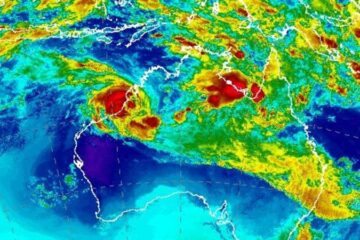Sharing research and promoting dialogue on the contributions of biodiversity in achieving the SDGs in Nepal
We organised an outreach event to help policymakers and local government representatives from Nepal understand the contributions of biodiversity in achieving the Sustainable Development Goals (SDGs). The event – conducted in Kakarbhitta, Jhapa, on 22 December 2022 – aimed to highlight the intricate links between biodiversity and ecosystems to human well-being, as evidenced by ground-level research in Nepal, and encourage the integration of biodiversity conservation into development interventions designed to achieve socioeconomic goals.
The outreach event was part of a four-year research project between ICIMOD and the Global Mountain Biodiversity Assessment (GMBA) of the University of Bern – ‘Mountain biodiversity and the Sustainable Development Goals: Knowledge for synergistic action’, which was launched to understand the specific challenges associated with the sustainable management and conservation of biodiversity (SDG 15) in the context of competing development goals, limited resources, and complex governance structures.
Local experiences on the importance of biodiversity
Honourable Rabin Koirala, former member of parliament of Nepal, and Honourable Purna Loksam, Vice Chairperson of the National Planning Commission of Province 1 were present at the event. Suvash Kumar Sharma, Assistant Forest Officer from the Ministry of Forests and Environment, as well as Chairpersons Sonam Lepcha and Tula Ram Gurung of Rural Municipalities Rong and Sandakpur, respectively, also attended, along with ward chairpersons, local representatives, conservation actors, reporters, and other key stakeholders.
ICIMOD presented the results of the cross-scale research project, showing biodiversity’s crucial contribution towards achieving the SDGs at the national level. We also presented specific issues, challenges, and opportunities for biodiversity conservation at local scales, drawing upon results from local-scale investigations at three sites in the Kangchenjunga Landscape (Nepal): Bahundangi (Jhapa), Maipokhari (Illam), and Yamphudin (Taplejung). One issue our study revealed was that various interventions aimed at meeting socioeconomic SDGs such as food security (SDG 2), energy (SDG 7), and infrastructure (SDG 9) were creating negative effects on biodiversity in all three sites, and that a clarification of responsibilities between conservation actors and the three tiers of government was required to address them.
This was followed by a feedback session, where political and local leaders provided their opinions on the results and added to the list of issues and results that were missing from the presentation. Participants felt that issues related to the cryosphere and the effects of climate change on biodiversity was missing, and they asked ICIMOD to integrate them into the findings if possible. Local leaders requested us to provide future research directions specifically related to water security and the food–water–energy nexus at their respective wards. Participants expressed their appreciation for the comprehensive research and presentation on the SDGs, biodiversity and conservation, and their relevance for Nepal. Honourable Purna Loksam stressed on the need for more research knowledge-sharing platforms so that relevant stakeholders can be better informed about issues surrounding biodiversity and conservation.
To provide a platform for youth to be engaged in conservation and development issues, two enumerators from two of the three field sites – Reena Darji from Bahundangi and Binayak Subedi from Maipokhari – presented their experiences and reflections on working as a field data collector, the role of biodiversity in household well-being in their villages, and their expectations from municipality and ward chairpersons for biodiversity conservation over the next five years. Specifically, the enumerators expressed that they learnt much from the locals they surveyed and understood why the documentation of local perceptions on biodiversity was necessary for the identification of site-specific issues and pathways to solve them.
Local leaders were encouraged to include youth in capacity-building programmes and projects related to natural resource governance. Finally, the workshop also involved rigorous discussions about site-specific issues, such as the management of human–elephant conflicts in Bahundangi, the promotion of sustainable tourism in Maipokhari, and the empowerment of women in conservation activities in each site.
The consultation workshop ended with the agreement that the issues and challenges shared by the stakeholders will be addressed in the research, a policy brief on the role of biodiversity towards the achievement of SDGs in Nepal will be prepared by ICIMOD, and the data gathered from the household survey in the three locations will be handed over to the respective ward offices. Furthermore, political leaders expressed their commitment to raising issues related to biodiversity conservation in relevant development forums at the local, provincial, and federal levels.
The context
Nepal boasts an impressive range of altitudes and microclimates, which support a diverse array of plant and animal species and ecosystems, contributing substantially towards achieving the SDGs. Despite its natural riches, Nepal’s biodiversity is under threat. Developmental interventions, such as infrastructure projects and agricultural intensification, are taking a toll on the country’s ecosystems. These interventions often prioritise economic growth over ecosystem health, leading to a decline in biodiversity and the valuable services that ecosystems provide, such as clean air and water, medicines, flood control, and food production.
To protect Nepal’s biodiversity and ensure that its diverse natural resources and habitats can continue to support the country’s people and wildlife for generations to come, it is important for policymakers and planners to consider the long-term impacts of development actions and work to balance the needs of nature and humans.

